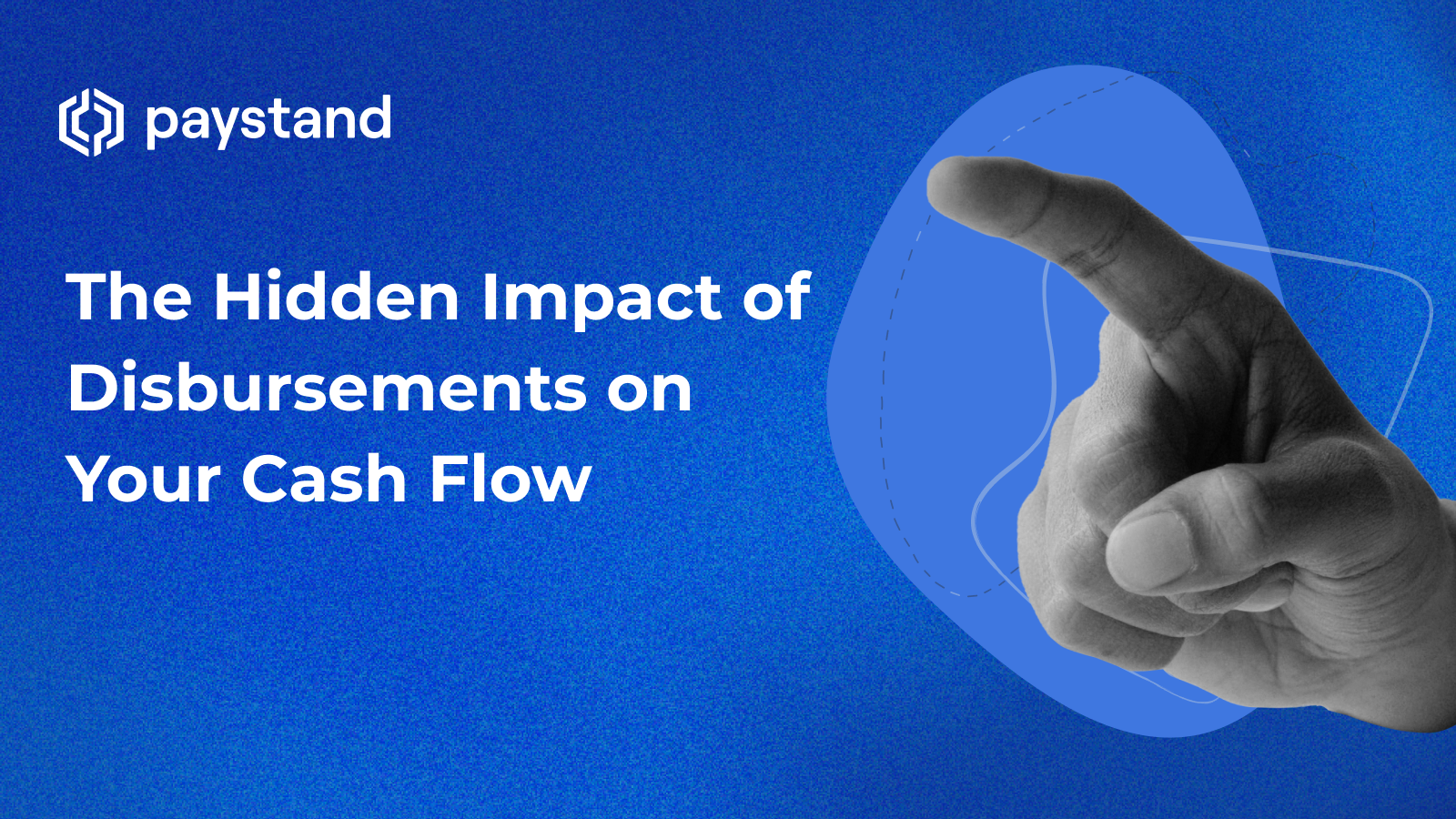The Hidden Impact of Disbursements on Your Business Cash Flow

Table of Contents
Key Takeaways
- A disbursement is the act of paying out funds from a business account, often for expenses like salaries, loans, or supplier payments.
- Disbursements differ from payments and reimbursements in terms of purpose, accounting, and tax implications.
- Tracking disbursements accurately is critical for compliance, budgeting, and avoiding errors like double-spending.
- Digital disbursement solutions can streamline operations, reduce costs, and improve cash flow management.
What is a Disbursement?
A disbursement is the act of paying out funds from a business account to another party. This could include payments for salaries, loans, supplier invoices, or other operational expenses. Disbursements are recorded as cash outflows and are critical for maintaining accurate financial records.
Disbursements can take various forms, including:
- Cash payments
- Checks
- ACH transfers
- Digital payments
Unlike payments, which are typically made in exchange for goods or services, disbursements often involve dedicated accounts and are tied to specific business operations.
Why Tracking Disbursements Matters
Accurate tracking of disbursements is essential for several reasons:
- Compliance: Properly recorded disbursements ensure your business meets tax and regulatory requirements.
- Budgeting: Tracking cash outflows helps you make informed financial decisions and avoid overspending.
- Fraud Prevention: Monitoring disbursements reduces the risk of errors, double spending, or unauthorized transactions.
By separating disbursements from payments and reimbursements, your accounting team can maintain clarity and accuracy in financial reporting.
How is a Disbursement Different from a Payment?
While disbursements and payments both involve the transfer of funds, they serve different purposes:
- Payments are made in exchange for goods or services, often initiated by the buyer.
- Disbursements are payouts from dedicated accounts, typically for operational expenses like salaries, loans, or supplier payments.
For example, paying a vendor for office supplies is a payment, while distributing employee salaries is a disbursement.
When to Categorize a Payment as a Disbursement
To determine whether a transaction is a disbursement, ask yourself:
-
Is the payment coming from a dedicated account?
-
Is the payment tied to operational expenses (e.g., salaries, loans, or supplier invoices)?
-
Does the payment need to be tracked separately for accounting or tax purposes?
If the answer is yes, the transaction is likely a disbursement.
Disbursement vs. Reimbursement: Key Differences
Disbursements and reimbursements are often confused, but they serve distinct purposes:
- Disbursements involve paying out funds for business expenses.
- Reimbursements involve repaying someone for expenses they’ve already incurred.
For example, reimbursing an employee for travel expenses is different from disbursing funds for a supplier invoice.
Types of Disbursements
Cash Disbursements
Cash disbursements refer to payments made in cash or cash equivalents (e.g., checks, ACH transfers). These are typically used for day-to-day operational expenses and are recorded as part of your cash flow management.
Digital Disbursements
Digital disbursements involve electronic transfers, such as ACH, EFT, or direct deposit. They offer several advantages, including:
- Faster processing times
- Lower transaction costs
- Improved security and compliance
Digital disbursements are ideal for businesses looking to streamline operations and reduce manual errors.
What is a Disbursement Account?
A disbursement account is a dedicated bank account used specifically for paying out funds. By separating disbursements from other transactions, businesses can:
- Improve cash flow management
- Avoid overdraft fees
- Ensure timely payments
For example, a business might have separate accounts for payroll, supplier payments, and loan disbursements.
Best Practices for Managing Disbursements
To optimize your disbursement processes, consider the following best practices:
- Automate Disbursements: Use digital solutions to reduce manual errors and save time.
- Track Expenses: Maintain detailed records of each disbursement, including the date, amount, and recipient.
- Ensure Compliance: Stay up-to-date with tax and regulatory requirements for disbursements.
- Choose the Right Tools: Invest in disbursement software that integrates with your accounting systems.
By implementing these practices, your business can improve efficiency, reduce costs, and maintain accurate financial records.
How Paystand Can Help Streamline Disbursements
At Paystand, we specialize in helping businesses optimize their financial operations. Our digital disbursement solutions enable you to:
- Process payments faster and more securely
- Reduce transaction costs
- Automate compliance and reporting
Ready to transform your disbursement processes? Learn more about Paystand today.





%20(1)%20(1).jpg?width=100&height=100&name=IMG_3752%20(1)%20(1)%20(1).jpg)